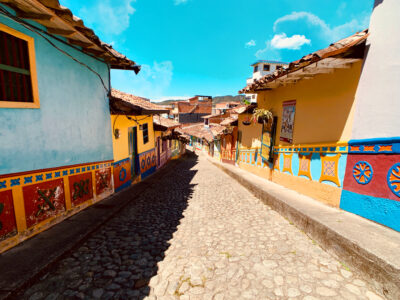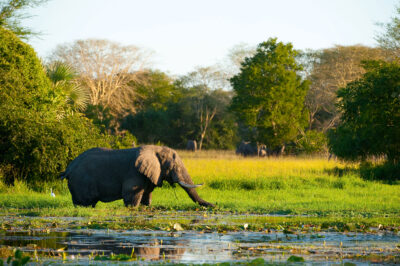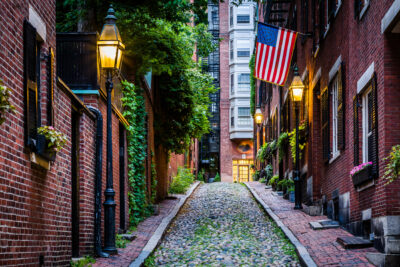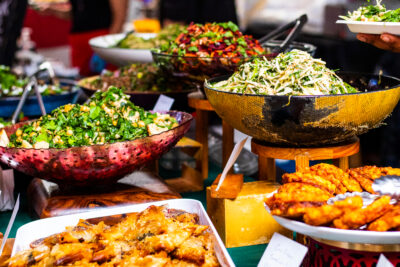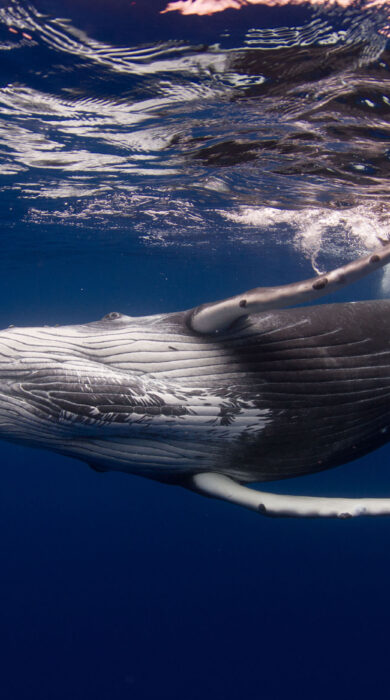
12 of the best locations for whale watching around the globe
Want to see whales in the wild? Make sure you’re in the right place at the right time with the help of our expert guide
It’s difficult to not be awed by whales. While on land the biggest mammal you’ll find is an African elephant, these beasts of the sea can be up to 25 times as large.
But it’s not just their sheer size that fascinates us: The mysteries, and beauty, of whale song (which the human ear can only partially register) is equally enchanting.
It’s little wonder, then, that many of us dream of seeing these creatures in their natural habitat. Looking for the best places to go whale watching around the world? Look no further, as we’ve rounded up the top destinations and the best times to visit them.
1. Vancouver Island, Canada

Which whales? Orca (killer whales), grey, humpback, minke
Why it’s a hotspot: Some 20,000 grey whales pass the island’s Pacific coast in spring; it also has resident orca (killer whales) – the most researched pods in the world
Other wildlife? Salmon, sea otter, seal, sea lion, bald eagle
Best for… Close-ups with orca in Johnstone Strait; spotting migrating greys, then attending the Pacific Rim Whale Festival (March)
When to go? March-April (grey); May-September (orca)
Which whales? Orca (killer whales), grey, humpback, minke
Why it’s a hotspot: Some 20,000 grey whales pass the island’s Pacific coast in spring; it also has resident orca (killer whales) – the most researched pods in the world
Other wildlife? Salmon, sea otter, seal, sea lion, bald eagle
Best for… Close-ups with orca in Johnstone Strait; spotting migrating greys, then attending the Pacific Rim Whale Festival (March)
When to go? March-April (grey); May-September (orca)
2. Québec, Canada

Which whales? Blue, humpback, fin, minke, beluga
Why it’s a hotspot: Three currents collide near Tadoussac in the Gulf of St Lawrence’s mouth, stimulating plankton development and providing a veritable feast for whales
Other wildlife? Seal, porpoise, dolphin, snow goose (March-May & Oct)
Best for… Spotting bright-white beluga – Saguenay Fjord is home to a resident population of these ghostly ‘sea canaries’
When to go? Best June-September
The east coast of Canada is also a top spot for whale watching, particularly around Tadoussac in Québec. Here, you’ll be able to see a number of different species, including the blue whale, the largest of them all; playful humpbacks, which are instantly recognisable thanks to their distinct pectoral fins; and beluga whales, nicknamed ‘sea canaries’ because of their high-pitched calls.
Read next: Your travel guide to Québec City, Canada
3. Iceland

Which whales? Minke, humpback, blue, sperm, sei
Why it’s a hotspot: The North Atlantic is a good feeding ground; whale-watching trips run from the west or north of the country – Húsavik is the main hub, but tours also leave from Reykjavík
Other wildlife? Puffin, porpoise, dolphin
Best for… Whale watching under the midnight sun (June-July); visiting Húsavik Whale Museum
When to go? Best May-September; June-July (blue); May-August (puffin)
Eurovision Song Contest fans may recognise the Icelandic town of Húsavik, but there’s more reasons to visit than just the Eurovision Museum. The town has long been the top hub for whale watching in the country as a number of different species enter the bay here. Plus, as the city is near the arctic circle, it’s possible to see the northern lights at certain times of year.
Which whales? Minke, humpback, blue, sperm, sei
Why it’s a hotspot: The North Atlantic is a good feeding ground; whale-watching trips run from the west or north of the country – Húsavik is the main hub, but tours also leave from Reykjavík
Other wildlife? Puffin, porpoise, dolphin
Best for… Whale watching under the midnight sun (June-July); visiting Húsavik Whale Museum
When to go? Best May-September; June-July (blue); May-August (puffin)
Eurovision Song Contest fans may recognise the Icelandic town of Húsavik, but there’s more reasons to visit than just the Eurovision Museum. The town has long been the top hub for whale watching in the country as a number of different species enter the bay here. Plus, as the city is near the arctic circle, it’s possible to see the northern lights at certain times of year.
4. Dominica

Which whales? Sperm, humpback, short-finned pilot, false killer, melon head, pygmy sperm
Why it’s a hotspot: Steep underwater drop-offs along the Nature Isle’s west coast create sheltered bays – ideal places for sperm whales to breed and calve
Other wildlife? Dolphins (several species), pelican, turtle,
Best for… Shore-based and boat-based sightings of resident sperm whales
When to go? Year-round but best November-March (sperm); January-April (humpback)
Read next: Why you should spend a week in Dominica – and how to do it
Which whales? Sperm, humpback, short-finned pilot, false killer, melon head, pygmy sperm
Why it’s a hotspot: Steep underwater drop-offs along the Nature Isle’s west coast create sheltered bays – ideal places for sperm whales to breed and calve
Other wildlife? Dolphins (several species), pelican, turtle,
Best for… Shore-based and boat-based sightings of resident sperm whales
When to go? Year-round but best November-March (sperm); January-April (humpback)
5. Baja California, Mexico

Which whales? Grey, blue, fin, Bryde’s, humpback, sperm, minke
Why it’s a hotspot: Greys come to breed and give birth in San Ignacio Lagoon, on the Pacific coast; multiple species congregate in the food-rich Sea of Cortez
Other wildlife? Dolphin, California sea lion, Guadalupe fur seal, northern elephant seal, blue-footed booby, frigatebird
Best for… Eyeballing curious and friendly greys, which often come right up against small boats
When to go? Best February-April
Here at Wanderlust, we’re always encouraging our readers to travel sustainably and responsibly, particularly when it comes to wildlife encounters. The general advice is to avoid experiences that involve interaction – but in Mexico’s San Ignacio Lagoon, it is the curious grey whales that are coming up to boats to have a look at humans for themselves. It is particularly remarkable when this was an area where whales were killed in the days of whaling.
Combine with a stay on the Sea of Cortez, where a whole range of other species can be found.
Read next: Whale watching in Baja California
6. Colombia

Which whales? Humpback
Why it’s a hotspot: Colombia’s Pacific coast is on a humpback migration route; sighting hotspots include Nuqui, Bahía Solano and Bahía Málaga. Combine the whales with a spot of jungle trekking
Other wildlife? Turtle, dolphin, sea lion
Best for… Taking boat trips to spot breaching humpbacks and mothers with calves
When to go? Best July-Nov (whales); Jan-July (turtle nesting)
While Colombia’s coastline bordering the Caribbean Sea promises gorgeous beaches, it is the Pacific Ocean that offers a different kind of treasure: Unbeatable whale watching. Humpback whales head to the area to give birth, and you can see whales near Nuquí, Bahía Solano and Bahía Málaga between July and November.
Read next: 6 wildlife experiences to have in Colombia
7. Scotland

Which whales? Minke, humpback, fin, sperm, orca
Why it’s a hotspot: A third of the North Atlantic’s whale population migrates via western Scotland every year, while some species are resident year-round
Other wildlife? Dolphin, porpoise, white-tailed eagle, puffin, basking sharks
Best for… The possibility of large pods of orca, especially off Shetland; minke sightings off the Hebrides
When to go? Best May-October
The Shetland Islands are filled with wildlife, from seals to puffins. And for those looking to go whale watching, you might not even have to step foot on a boat, as orca pods often come close enough to shore for you to see them from land. In fact, there’s even a Facebook group where local residents post sightings.
Aside from Shetland, the Moray Firth and the Hebrides are also known for sightings.
Read next: A wildlife guide to Scotland: Basking sharks, orca and seabirds
8. Azores

Which whales? Sperm, humpback, sei, bearded, blue, short-finned pilot, orca, fin
Why it’s a hotspot: The remote archipelago sits in nutrient-rich waters; the seas sustain resident whale populations, while the islands are also visited by migrating species
Other wildlife? Dolphin, turtle, manta ray, petrel, shearwater
Best for… Seeing sperm whales spyhopping; swimming with dolphins; gazing out from vigias (whale observation posts)
When to go? Year-round (sperm); late March-early June (blue, fin, sei)
The remote archipelago of the Azores may well be one of the best places to go whale watching down to sheer numbers. More than 20 different species have been spotted here (that’s a third of the total number of species in the world), and the Azores are one of the world’s largest whale sanctuaries. Thanks to the variety of species, whale watching here is good year-round, but particularly in the summer for sperm, sei and bearded whales, and in the spring for blue whales.
Which whales? Sperm, humpback, sei, bearded, blue, short-finned pilot, orca, fin
Why it’s a hotspot: The remote archipelago sits in nutrient-rich waters; the seas sustain resident whale populations, while the islands are also visited by migrating species
Other wildlife? Dolphin, turtle, manta ray, petrel, shearwater
Best for… Seeing sperm whales spyhopping; swimming with dolphins; gazing out from vigias (whale observation posts)
When to go? Year-round (sperm); late March-early June (blue, fin, sei)
The remote archipelago of the Azores may well be one of the best places to go whale watching down to sheer numbers. More than 20 different species have been spotted here (that’s a third of the total number of species in the world), and the Azores are one of the world’s largest whale sanctuaries. Thanks to the variety of species, whale watching here is good year-round, but particularly in the summer for sperm, sei and bearded whales, and in the spring for blue whales.
9. Western Cape, South Africa

Which whales? Southern right, humpback, Bryde’s
Why it’s a hotspot: Two oceans converge, resulting in a huge diversity of marine life; sheltered bays and warmer waters provide calving spots for migrating whales
Other wildlife? Great white shark, dolphin, African penguin, Cape fur seal, black oystercatcher
Best for… Shore-based spotting along the Whale Route; Hermanus Whale Festival
When to go? Best July-November; May-December (humpback)
Which whales? Southern right, humpback, Bryde’s
Why it’s a hotspot: Two oceans converge, resulting in a huge diversity of marine life; sheltered bays and warmer waters provide calving spots for migrating whales
Other wildlife? Great white shark, dolphin, African penguin, Cape fur seal, black oystercatcher
Best for… Shore-based spotting along the Whale Route; Hermanus Whale Festival
When to go? Best July-November; May-December (humpback)
10. Sri Lanka

Which whales? Blue, sperm, humpback, Bryde
Why it’s a hotspot: Sri Lanka’s southern tip nudges the depths of the continental shelf, favoured by blues; nowhere else does the world’s biggest creature swim so close to land, so reliably
Other wildlife? Dolphin, turtle, flying fish
Best for… Cruising out from Mirissa to spot mighty blues
When to go? Best January-April
Sri Lanka has an abundance of wildlife on land, from leopards in Yala National Park to elephants in Udawalawe National Park. Off the southern coast, there’s just as much to see as blue, sperm, humpback and Bryde whales swim here. Indeed this is one of the best places in the world to see blue whales as they are relatively close to shore between November and April.
Read next: 15 of the best things to do in Sri Lanka
Which whales? Blue, sperm, humpback, Bryde
Why it’s a hotspot: Sri Lanka’s southern tip nudges the depths of the continental shelf, favoured by blues; nowhere else does the world’s biggest creature swim so close to land, so reliably
Other wildlife? Dolphin, turtle, flying fish
Best for… Cruising out from Mirissa to spot mighty blues
When to go? Best January-April
Sri Lanka has an abundance of wildlife on land, from leopards in Yala National Park to elephants in Udawalawe National Park. Off the southern coast, there’s just as much to see as blue, sperm, humpback and Bryde whales swim here. Indeed this is one of the best places in the world to see blue whales as they are relatively close to shore between November and April.
Read next: 15 of the best things to do in Sri Lanka
11. South Island, New Zealand

Which whales? Sperm, blue, humpback, southern right, orca
Why it’s a hotspot: Tectonic plates collide and ocean currents meet off Kaikoura, attracting an abundance of marine wildlife
Other wildlife? Seal, dolphin, albatross, penguin, shearwater
Best for… Sperm whales, which are present here year-round; swimming/snorkelling with huge pods of dolphin and playful seals
When to go? Year-round (sperm); June-July (humpback); December- March (orca)
Which whales? Sperm, blue, humpback, southern right, orca
Why it’s a hotspot: Tectonic plates collide and ocean currents meet off Kaikoura, attracting an abundance of marine wildlife
Other wildlife? Seal, dolphin, albatross, penguin, shearwater
Best for… Sperm whales, which are present here year-round; swimming/snorkelling with huge pods of dolphin and playful seals
When to go? Year-round (sperm); June-July (humpback); December- March (orca)
12. Tonga

Which whales? Sperm, humpback
Why it’s a hotspot: During the austral winter, humpbacks migrate from the South Pole to warmer Polynesian waters to mate and give birth
Other wildlife? White-tip reef shark, black-tip reef shark
Best for… Spotting humpback mothers with calves – and possibly jumping in to swim with them: this is one of the few places in the world where snorkelling with whales is permitted
When to go? Best July-October
Tonga, the Polynesian island country near Fiji and Samoa, is one of the few places in the world where you can swim with whales. You can do so off ʻEua, Ha’apai, Tongatapu and Vava’u through one of the country’s licensed operators, who must follow sustainable practices.
Whales head to the waters off Tonga between July and October as they prepare to give birth to their young, bringing with them new calves.
Which whales? Sperm, humpback
Why it’s a hotspot: During the austral winter, humpbacks migrate from the South Pole to warmer Polynesian waters to mate and give birth
Other wildlife? White-tip reef shark, black-tip reef shark
Best for… Spotting humpback mothers with calves – and possibly jumping in to swim with them: this is one of the few places in the world where snorkelling with whales is permitted
When to go? Best July-October









